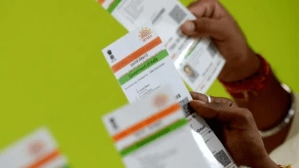India, today’s developing country was once one of the wealthiest countries in the world and at the center of business and trade. As we delve deeper into its history, we come across merchants, traders, bankers, businessmen, and women who made significant contributions to the country’s rich history. Before colonial rule, India was a hub of wealth and home to some of the richest people in history. One such name is Jagat Seth of Murshidabad district in West Bengal. He was a merchant and a banker in the 18th century with a net worth of Rs 8.3 lakhs and possessed assets worth $1 trillion in today’s currency, as per a TOI report.
Muhammad Shah, the Mughal emperor, bestowed the title of Jagat Seth upon Fateh Chand in 1723. After that, the entire family of Fateh Chand was referred to as the Jagat Seth Family. The “Banker of the World,” Jagat Seth, was a very successful banker in Bengal during the first half of the 18th century.
The Jagat Sheth family can be traced back to Manik Chand, who arrived in Dhaka from Patna in the early 1700s to launch a commercial enterprise. Manik Chand relocated to Murshidabad when it became the new home of Bengal’s government. He earned the Nawab’s favour in Murshidabad and rose to the position of banker and financial counsellor. Emperor Farruk Siyar even conferred the title “Nagar Sheth” upon him in Delhi in 1712.

After Manik Chand’s death in 1714, his adoptive son and nephew Fateh Chand took over the family company. The Jagat Seth family saw tremendous prosperity when Fateh Chand served as its leader. Because of their sway, even the East India Company engaged in business with them, engaging in transactions including loans and the purchasing and selling of precious metals.
According to British historian Robert Orme, the head of this Hindu merchant family, which was the richest in the Mughal empire, had a significant impact on the Murshidabad government and they helped the Mughals and later the Britishers financially.
In terms of significance, the company owned by the Jagat Seth family was compared to the Bank of England. They performed a variety of duties for the Bengali government, including tax collection and financial management. They even produced their own coinage and worked with foreign currency, which increased their fortune.
According to a TOI report, the Jagat Seth family’s fortune in the 1720s was more than that of the British Empire. They owned property that would be worth at least $1 trillion today. They reportedly possessed more cash than all of England’s banks combined, according to British publications.
Hiranand’s son Manikchand Sahu and Murshid Quli Khan, the first Nawab of Bengal, grew close. At this time, nearly every significant city in pre-independence India had a Sahus, or Seth, office. Their offices remarkably resembled those of a contemporary bank. They even created a system of internal communication that included messengers and other tools for easing trade between cities. Additionally, they made a lot of money by aiding the British, French, and Portuguese colonial powers in their wars against smaller Indian kingdoms.
Mahtab Chand succeeded his grandfather Fateh Chand in 1744. During the reign of Alivardi Khan, Mahtab Chand and his relative Maharaja Swarup Chand had tremendous power. When Sirajuddaula assumed authority, however, everything changed, and they ultimately teamed up with the English to plot against him. Mir Jafar took over as the new Nawab following the Battle of Plassey. In 1763, he orchestrated the murder of numerous members of the family, including Jagat Seth, Mehtab Chand, and his cousin Swarup Chand, and dumped their bodies from the Munger Fort ramparts as per India Times report.

They lost control of the majority of their lands, and the British East India Company never received their loan back. The 1857 uprising was the final straw for them. The Jagat Seths had disappeared from public eye by the 1900s.
Similar to the Mughals, their descendants are unknown. A short distance from Hazarduari, Jagat Seth’s home has since been turned into a museum located in Murshidabad.









